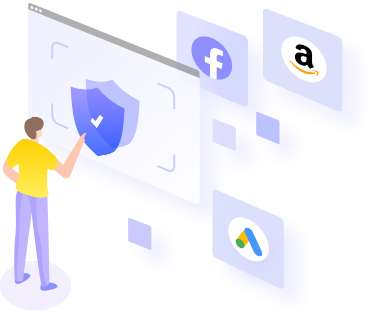Is Cloudflare important in an age where online security matters? It's a strong defense against unwanted bots and cyber threats. But what if you need to access data or automate tasks?
This comprehensive guide reveals strategies and methods for bypassing Cloudflare’s defenses. Whether you’re a web crawler, automation enthusiast, or simply fascinated by technology, read this blog post to master Cloudflare’s security and empower your online efforts.
Understanding Cloudflare's bot protection
Before we get into effective ways to bypass Cloudflare, let's start by learning a little about Cloudflare.
- Cloudflare Bot Protection, offered by a well-known web security company, is part of Cloudflare's Security Operations Center (SOC) as a Service. The solution is suitable for a variety of businesses and offers services such as comprehensive security monitoring, incident response, and threat detection.
- The Bot Management module is designed to manage bots that can bypass CAPTCHAs and cause problems like credit card stuffing, credential stuffing, inventory hoarding, application DDoS, content spam, etc. This tool still allows certain types of bots to function like Google bots, chatbots, personal assistant bots, and web crawlers.
- Bot Management can be a real headache for professionals and businesses that rely on large-scale web crawling for their work. Sites protected by Cloudflare will deny bots access. Even after multiple attempts, you will still encounter error messages like “Error 1012: Access Denied” or “Error 1015: You are being rate limited.”
If you’re experiencing this issue, you’ll need to learn about effective bot protection mitigations. To do that, it’s important to understand the methods Cloudflare uses to identify bots, as this knowledge will help you get past Cloudflare more effectively.

Bot Detection with Cloudflare
Cyberbots are everywhere, and Cloudflare has a strategy for dealing with them. They use two main approaches: active and passive bot detection. In the following sections, we’ll dive into these techniques, providing details and examples for each.
Passive Bot Detection Methods
“Passive bot detection” is like a hidden camera, silently observing automated bots without disturbing or chasing them away.
Detect botnet based on IP address and its fraud score
Using a “bad” IP address won’t get you past Cloudflare. Why?
Cloudflare uses advanced behavioral analytics to monitor bot networks. It observes how these bot networks behave and keeps a record of IP addresses and devices that exhibit malicious bot-like behavior. When a request comes from one of these flagged IP addresses or devices, Cloudflare automatically blocks the request.
Each IP address is assigned a fraud or risk score, which serves as an indicator of the reputation of that particular IP address. This score will be based on the historical reputation of the internet service provider (ISP) associated with the IP address, the geographic location of the IP address, and the origin of the IP address itself.
Cloudflare will look at this fraud score and if the IP address is associated with a suspicious ISP, is in a suspicious location, or has a suspicious origin, Cloudflare will restrict what the bot using that IP address can do.
Check HTTP request headers
Cloudflare analyzes HTTP request headers to distinguish bots from real users. If the request doesn't originate from a regular web browser or is missing required headers, the request is flagged as a bot and blocked.
Using TLS fingerprints
Cloudflare uses TLS Fingerprinting to detect the user agent because fingerprints vary between devices and software, and when a device connects using TLS, it sends a “client hello” message with encryption details. Cloudflare checks this message and the “user-agent” header. If they match a known fingerprint, the request is accepted; otherwise, it may be blocked.
HTTP/2 Fingerprinting Technique
Like TLS, HTTP/2 headers are important for identifying bots. HTTP/2 is widely used and enhances web security. It compresses header fields, allowing multiple requests over a single connection. HTTP/2 fingerprinting uses a binary framework to create a unique fingerprint for each request. Cloudflare uses this to verify requests. It also matches HTTP/2 fingerprints against a whitelist, just like TLS fingerprints. If there is a match, the request is passed.
Proactive Bot Protection Methods
Active bot detection means checking on the visitor’s side to see if it is a robot and blocking it. Here, we will share some common methods that Cloudflare uses to detect active bots.
Use CAPTCHA
CAPTCHAs are a popular way to block bots. They are often placed before logins to challenge bots because some patterns and images require human intelligence to understand. Cloudflare uses CAPTCHAs to detect bots, but they are not always the answer. Whether or not a CAPTCHA is used depends on factors such as site setup, suspicious traffic, and non-standard browsers.
Event Tracking
Humans typically type and click while browsing. Bots, on the other hand, operate mechanically. They send automated commands, making many requests without much use of the keyboard and with little to no clicking. Cloudflare uses these actions to track whether a request is made by a human or a bot.
Canvas fingerprint
This method records specific details about a user’s web browser. For example, it records details like the type of graphics card and rendering engine used. These details form a unique “fingerprint” that identifies a user as they visit different websites. By studying the canvas fingerprint of each request, Cloudflare can distinguish between legitimate users and bots.
Browser Fingerprinting
Browser fingerprinting is a technique for uniquely identifying devices. It does this by analyzing various attributes of the device, such as screen size, browser type, and installed plugins. Cloudflare can use this technique to create a fingerprint of each device that connects to a protected site. If the same fingerprint appears multiple times, Cloudflare can assume it is a bot. Cloudflare can also use browser fingerprinting to detect bots that frequently change their user agent string. Since other attributes of the device remain the same, Cloudflare can use them to identify the requester as a bot.
Environment API Query
API queries involve collecting data about the user's environment, including details like operating system, browser type, and screen resolution. This technique is used by Cloudflare to identify bots that are trying to hide their identity by using spoofed user agent strings or similar tactics.
By carefully examining the environmental data provided in each request, Cloudflare can detect behavioral patterns that are characteristic of bot activity. For example, if a large number of requests share the same screen resolution, Cloudflare can consider this a sign of bot behavior and block those requests.
How to bypass Cloudflare effectively?
Cloudflare uses a number of methods to block bots from accessing websites, with the main factors being IP addresses and browser fingerprints. Browser fingerprints include user agent data, canvas fingerprints, operating systems, screen resolutions, etc. Therefore, to effectively bypass Cloudflare’s security measures, it is necessary to modify these two key parameters. By changing your IP address and manipulating your browser fingerprint, you can increase your chances of successfully navigating through Cloudflare’s defenses.
Bypass Cloudflare by Changing Your IP Address
Sending too many requests from a single IP address can be suspicious. If Cloudflare detects this, they will block your access. To avoid this, you should regularly rotate your IP address, especially after each crawl session.
To change your IP address, you can use a VPN or a proxy. But residential proxies are your best bet. Of the different types of proxies, residential proxies tend to work well without raising suspicion. Data center proxies can make your web traffic look suspicious and are less likely to fool Cloudflare.
Change your browser fingerprint with Antidetect Browser Gem login to bypass Cloudflare

Gem login anti-detection browser can help you create multiple profiles with different browser fingerprints, making it easier to bypass Cloudflare's bot detection.
To change your IP address for each profile, Gem login provides support for six proxy types: HTTP, Socks 4, Socks 5, SSH, Kiotproxy. This allows you to add proxies when creating a new profile.
You can also customize your browser fingerprint with https://gemmmo.vn/ . It randomly generates different profiles with unique browser fingerprint parameters like user agent, operating system, screen resolution, time zone, Canvas Mask, WebGL, Hardware Concurrency and device memory.







